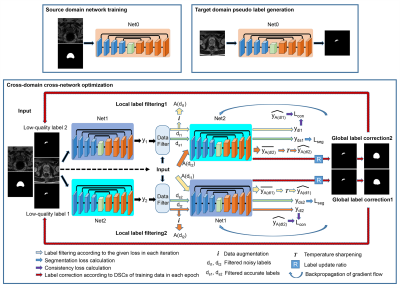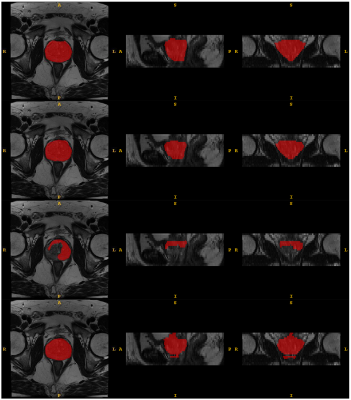Cheng Li1, Hui Sun1, Taohui Xiao1, Xin Liu1, Hairong Zheng1, and Shanshan Wang1
1Paul C. Lauterbur Research Center for Biomedical Imaging, Shenzhen Institutes of Advanced Technology, Chinese Academy of Sciences, Shenzhen, China
1Paul C. Lauterbur Research Center for Biomedical Imaging, Shenzhen Institutes of Advanced Technology, Chinese Academy of Sciences, Shenzhen, China
Unsupervised
domain adaptation is crucial for the applications of deep learning-based
prostate MR image segmentation models. Our method designs an effective approach
to generate highly accurate pseudo labels for unlabeled target domain training
data and shows promising test results.

Figure 1. The proposed framework. Source domain labeled training data are employed
first to train a network that generates pseudo labels for the target domain
unlabeled training data. Then, the combined source domain labeled training data
and target domain pseudo-labeled training data are utilized to achieve our
proposed cross-domain cross-network optimization.

Figure 4. Example segmentation maps when transferring models from Domain 1 to Domain 2. From left to right, the
three columns correspond to the transverse plane, the sagittal plane, and the coronal plane. From the head to bottom, the four rows
refer to the ground-truth manual segmentation, the outputs of models trained
directly on Domain 2 training set, the outputs of models trained on Domain 1 labeled
training set, and the outputs of models trained on Domain 1 labeled training
set and Domain 2 pseudo-labeled training set with the proposed cross-domain cross-network
optimization method.
